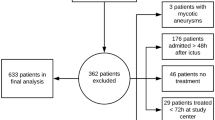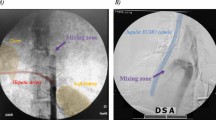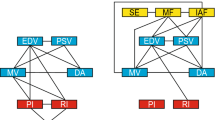Abstract
ABSTRACT. The acute effects of normoxemic hypocarbia and hypercarbia were examined in six newborn piglets. Brain blood flow was maintained during hypocarbia until extremely low Paco2 (<15 mm Hg) levels were achieved at which time total brain and cerebral blood flow decreased significantly from baseline values. Blood flow to the thalamus, cerebellum and brain stem was unchanged from baseline conditions during hypocarbia. This suggests that the newborn brain is relatively insensitive to moderate degrees of hypocarbia. Extreme hypocarbia (Paco2 <15 mm Hg) was associated with a significant increase in heart rate, accompanied by a significant decrease in mean arterial blood pressure; however, cardiac output was not significantly different from baseline determinations. Hypercarbia with normoxemia was associated with significant increases in total brain blood flow, with greater blood flow to the brain stem, cerebellum, and thalamus than to the cerebrum. The percentage of cardiac output received by the brain was also significantly increased, although total cardiac output was unchanged. This demonstrates that the newborn cerebral vasculature is sensitive to hypercarbia and that regional differences in sensitivity may account for the greater increments in blood flow to the caudal portions of the brain than that to the cerebrum.
Similar content being viewed by others
Log in or create a free account to read this content
Gain free access to this article, as well as selected content from this journal and more on nature.com
or
Author information
Authors and Affiliations
Rights and permissions
About this article
Cite this article
Hansen, N., Brubakk, AM., Bratlid, D. et al. The Effects of Variations in Paco2 on Brain Blood Flow and Cardiac Output in the Newborn Piglet. Pediatr Res 18, 1132–1136 (1984). https://doi.org/10.1203/00006450-198411000-00015
Received:
Accepted:
Issue date:
DOI: https://doi.org/10.1203/00006450-198411000-00015
This article is cited by
-
Pharmacotherapy for meconium aspiration
Journal of Perinatology (2008)
-
Regional blood flow in brain and peripheral tissues during acute experimental arterial subdural bleeding
Acta Neurochirurgica (1993)
-
Effect of 2-Chloroadenosine on Cerebrovascular Reactivity to Hypercapnia in Newborn Pig
Journal of Cerebral Blood Flow & Metabolism (1992)
-
Cerebral blood flow during experimental epidural bleeding in swine
Acta Neurochirurgica (1990)
-
Effects of Lactic Acid Infusions and pH on Cerebral Blood Flow and Metabolism
Journal of Cerebral Blood Flow & Metabolism (1988)



